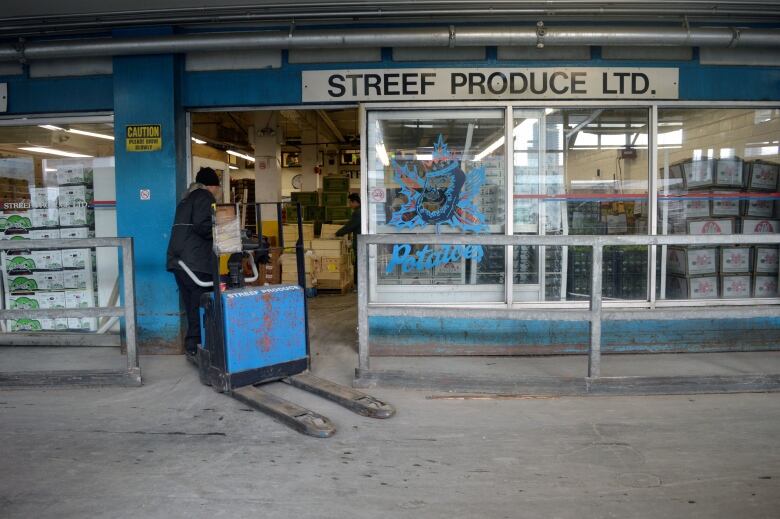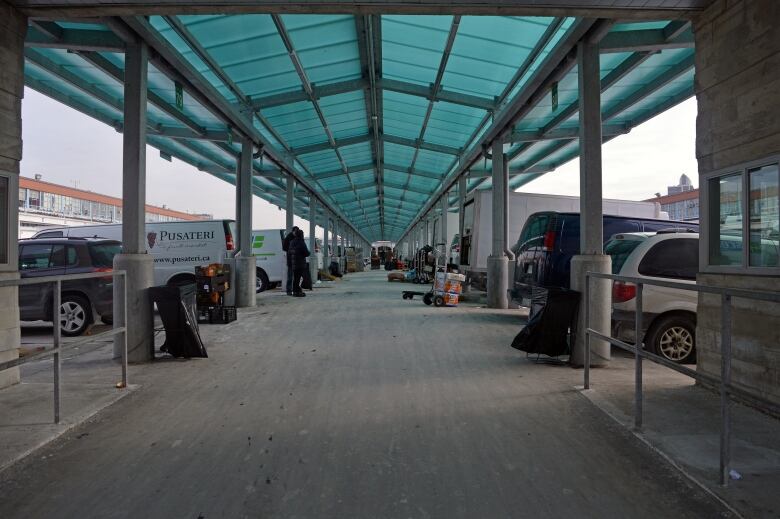High produce prices create 'a chain' of rising costs, distributor says
Price for a single box of broccoli has more than tripled, Toronto-area produce distributor says

William Chou has been a produce distributor since 1992.
As the owner of Scarborough-based Tai Ton Trading, he delivers fruits, vegetables, dry goods and disposable utensils to around 300 restaurants and smaller distributors throughout southern Ontario travelling as far west as London and as far north as Sudbury.
Chou has been around the block more than a few times, but when it comes to the recent surge in produce prices, he says he's "never seen anything like this before."
- CBC FORUMCauliflower and celery and meat, oh my! Your ideas for tackling rising food prices
- Food prices to remain high amid weak dollar, weather-related supply issues
- High food prices hurting low-income people
- How to eat healthy and on budget despite soaring food costs
- Nunavut food prices soar amid U.S. drought, plunging loonie
"Normally, we sell a case of broccoli to restaurants for a reasonable price, maybe $18 or $20," says Chou.
Now, he says, the price he has to pay for a single case has risen to $65, before he marks it up and sells it to his customers.
Chou says he usually marks up items about 20 percent, so something he buys for $25 will be sold for about $30.
CBC Forum on rising food prices
"Flyers, freezers and a garden will get you through." a comment from Adrian Straathofon the CBC Forum chat on rising food prices. Read the full discussion here.
But Chou says he has significantly lowered his mark-ups sometimes to the single digits in order to keep his customers going.
He says many of his restaurants already have razor-thin profit margins and fixed prices on their menus, so high produce prices place an enormous amount of pressure on their budget.
Restaurants either have to eat the higher costs and pay the difference out of their own pockets, or charge more and risk losing patrons.
Chou blames the weak loonie and exchange rate.
"Only paper products like tissue paper haven't increased [in price] yet because they're made in Canada," he said. "Everything else has."

He also thinks the low value of the Canadian dollar means people are eating out less, which affects the business of his clients, and in turn means they're ordering less from him.
"It's a chain," says Chou. "Restaurants are now only ordering a few bunches of celery or a half case instead of a full case. They are not stocking up much, only enough for maybe one or two days. Theyare hoping that tomorrow prices will drop."
"We aren't losing money, but it's tough," he adds. "If this continues for more than six or eight months, many restaurants could close up."
Weather bearsbrunt of blame
Although the weak Canadian dollar and exchange rate has some effect in the recent surge of prices, someproduce wholesalers and vendors say the weather especially in places like California, where Ontario gets most of its produce is the main culprit.
"Weather is the main reason for shortages and high prices," says Rick Ashford, vice-president of mentoring and training at wholesaler Gambles Ontario Produce.
"California, Mexico, parts of Texas and Florida,where most of our vegetables are grown in the winter,havebeen experiencing poor growing conditions," he said.
Ashford gives the now-infamous example of cauliflower.
- Cauliflower's soaring cost affects local businesses
- Cauliflower, celery costing $7: Who can afford to eat healthy?
- Soaring price for trendy cauliflower causes problems for restaurants
He says the vegetable is primarily grown in Salinas, Calif., during the spring and summer months before switching further south to Yuma, Ariz., during the fall and winter.
However, Ashford says crops finished early in Salinas due to very hot and dry weather, well before conditions in Yuma were ready for growing.

Without the usual overlap, cauliflower saw a sudden supply shortage.
"Around American Thanksgiving, you saw prices [for cauliflower] increase dramatically," Ashford said.
Chris Streef, general manager of Streef Produce, a vendor within the Ontario Food Terminal, says California's ongoing drought has also affected the volume and supply of cauliflower, which in turn raises prices.
"Drought affects supply," says Streef. "If a yield of cauliflower only produces half of what it's supposed to, prices are jacked up to make up the difference."
"The produce industry is just supply and demand," he adds. "All we can hope for this year is the weather to be better and the yields to be good."













_(720p).jpg)


 OFFICIAL HD MUSIC VIDEO.jpg)
.jpg)



























































































